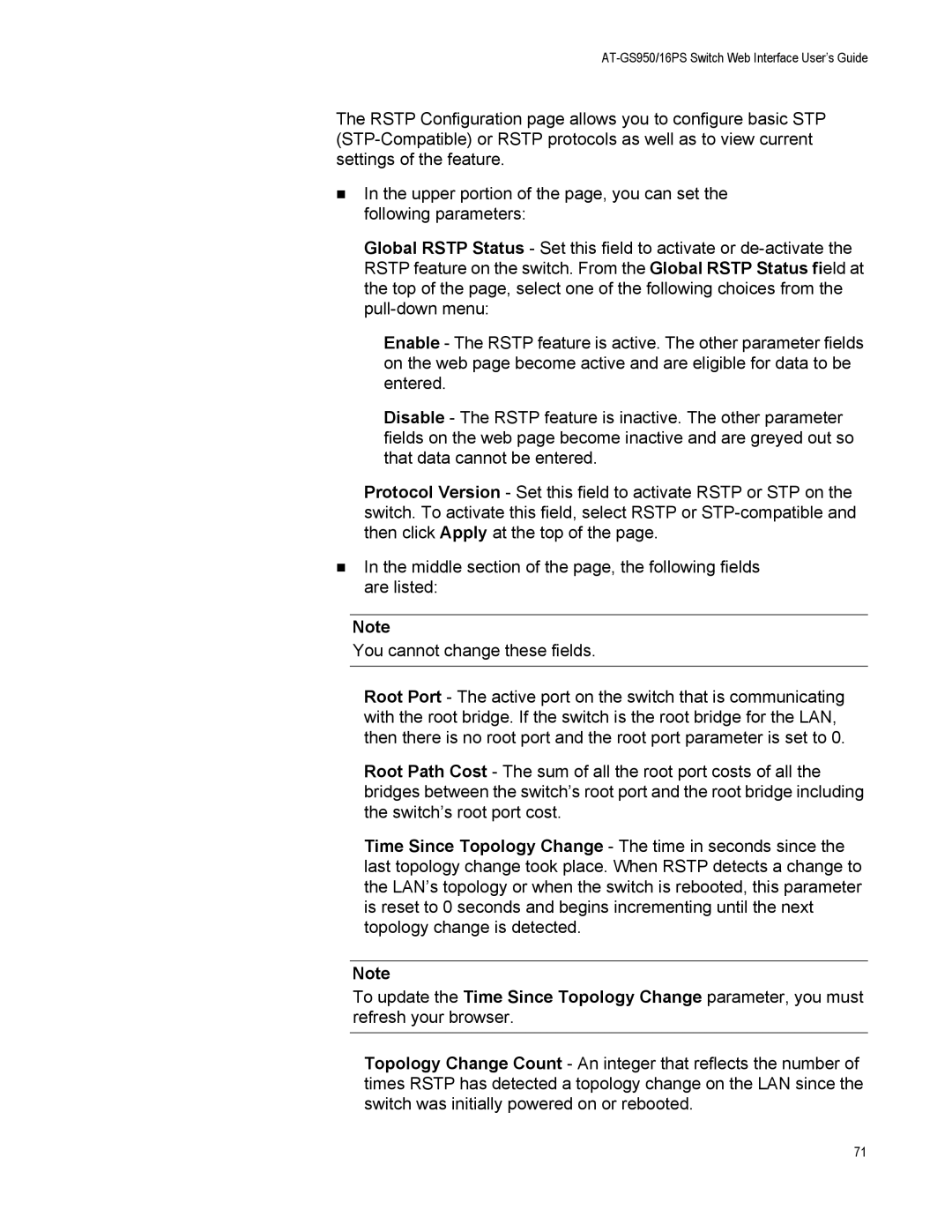
AT-GS950/16PS Switch Web Interface User’s Guide
The RSTP Configuration page allows you to configure basic STP
In the upper portion of the page, you can set the following parameters:
Global RSTP Status - Set this field to activate or
Enable - The RSTP feature is active. The other parameter fields on the web page become active and are eligible for data to be entered.
Disable - The RSTP feature is inactive. The other parameter fields on the web page become inactive and are greyed out so that data cannot be entered.
Protocol Version - Set this field to activate RSTP or STP on the switch. To activate this field, select RSTP or
In the middle section of the page, the following fields are listed:
Note
You cannot change these fields.
Root Port - The active port on the switch that is communicating with the root bridge. If the switch is the root bridge for the LAN, then there is no root port and the root port parameter is set to 0.
Root Path Cost - The sum of all the root port costs of all the bridges between the switch’s root port and the root bridge including the switch’s root port cost.
Time Since Topology Change - The time in seconds since the last topology change took place. When RSTP detects a change to the LAN’s topology or when the switch is rebooted, this parameter is reset to 0 seconds and begins incrementing until the next topology change is detected.
Note
To update the Time Since Topology Change parameter, you must refresh your browser.
Topology Change Count - An integer that reflects the number of times RSTP has detected a topology change on the LAN since the switch was initially powered on or rebooted.
71
